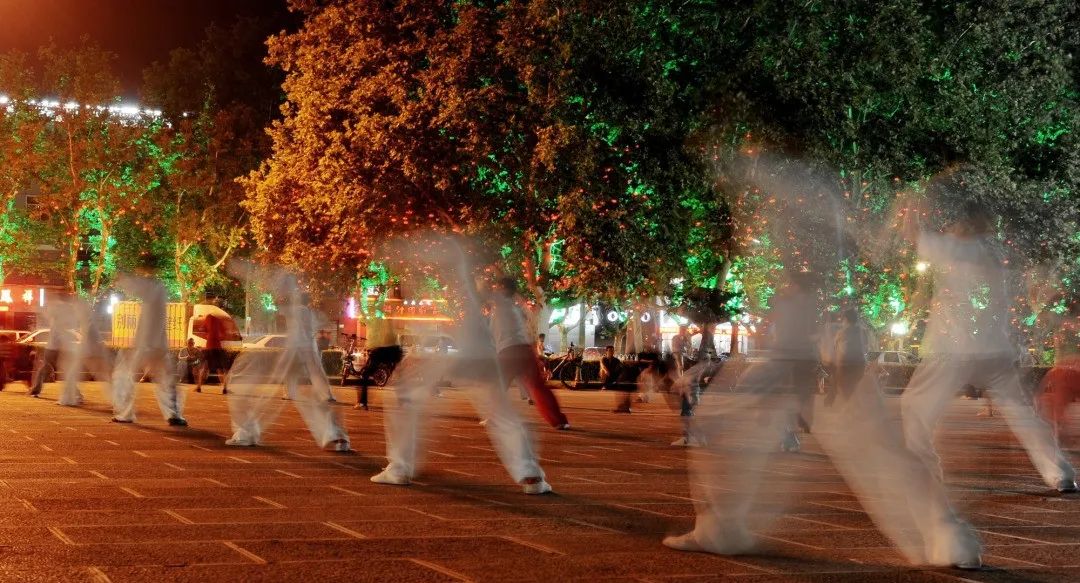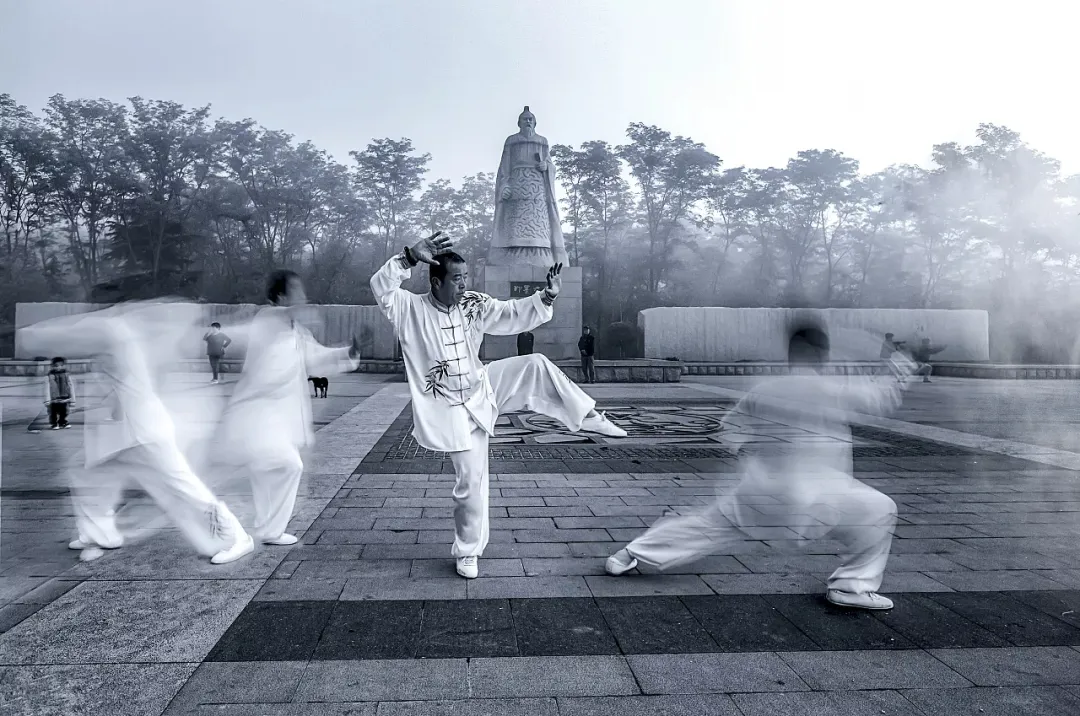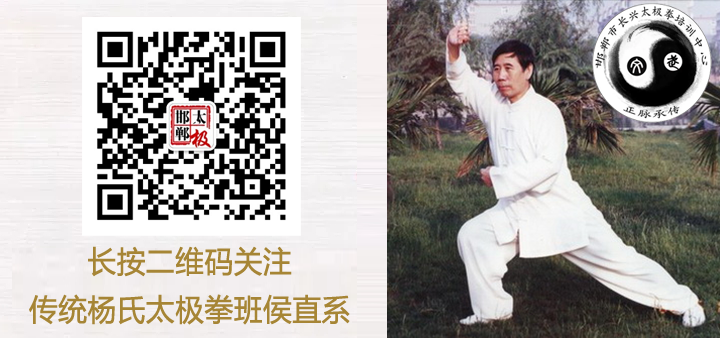From the characteristics of Tai Chi, practicing requires not only to achieve “lightness and softness, continuity and uniformity, roundness and naturalness, coordination and completeness,” but also to consider the issue of rhythm. Otherwise, whether too slow or too fast, lacking in dynamic changes, it becomes difficult to showcase the characteristics and style of Tai Chi.Furthermore, looking at the rules of Tai Chi routine composition, the entire routine transitions from a stable beginning to a climax, and then returns to stability, or from the beginning to the middle part, and then to the end, all having their peaks.Of course, the manifestations of emptiness and fullness, speed and slowness, looseness and tightness, and tension and relaxation during the practice are alternating; such rhythmic changes are essential to express the essence of Tai Chi.

For beginners in Tai Chi, whether learning from instructional videos or following others while practicing to the accompaniment of Tai Chi music or movement instructions, it is difficult to embody the rhythm of Tai Chi due to unfamiliarity with the movements.The former can repeatedly replay movements, paying attention to body shape, hand shape, foot shape, as well as body methods, hand methods, foot methods, leg methods, and eye methods, but at best, it is merely mimicking; while the latter, simply following others, lacks the understanding of form and method.Whether the former or the latter, practicing in this way for a long time makes it hard to reach the rhythmic state of Tai Chi where “the spirit is the commander, the body is the driver,” and “the intention moves the body.”Speaking of rhythm, it should be reflected in the opening and closing of movements, and the changes in speed. For example: when transitioning from one posture to another, as the center of gravity shifts from one supporting leg to the other, the movement should be light and slow, while in a fixed posture, it should be relaxed and stable. Mastering rhythm is a complex process; most practitioners begin to focus on the changes of emptiness and fullness in their feet but often neglect the changes of emptiness and fullness in their upper limbs, making it naturally difficult to express rhythm.Taking the four distinct movements of “Grasp the Bird’s Tail”—Peng (Ward Off), Lu (Roll Back), Ji (Press), and An (Push)—as an example: When performing Peng, the arms form a circular shape, pulling and extending, with tension throughout the body, and the force emanates from the outer side of the forearms; in a fixed posture, the shoulders slightly move forward, then transition into the Lu movement, where the back hand and front hand come together slowly, and as the hands move down and back, they should transition from slow to fast, with the waist relaxed and hips sinking, as if pulling and releasing an object, with the arms slightly sinking; when the hands connect and push out from emptiness to fullness, the shoulders are relaxed and heavy, elbows relaxed and hanging, and the arms are rounded, with force emanating from the forearms and outer wrists; in the An movement, when both hands push upward and forward along an arc from emptiness to fullness, the wrists should be slightly heavy, fingers extended, and palms open.

The so-called rhythm refers to the natural connection of the four distinct movements, maintaining a continuous sense of rhythm between movements, achieving a dialectical unity of hardness and softness, looseness and tightness. The entire set of movements should have a sense of rhythm, with each movement having a process of beginning, carrying, accumulating, and releasing, which reflects the oppositional unity of opening and closing, emptiness and fullness, speed and slowness, lightness and heaviness.The beginning and carrying phases are the empty stages of a movement, where the body should be relaxed, and the force should be gentle. The accumulating phase is the stage of gathering strength before the force is released, transitioning from emptiness to fullness, where under the guidance of consciousness, the spirit and force should be gently reined in. The release phase is the solid stage, where the force should be stable and substantial. Each movement, with “hardness and softness combined,” and “speed and slowness alternating,” will produce a rhythm that is “heavy yet not stiff, light yet not floating.”In Tai Chi, under the spiral action throughout the body, there are both the four main movements of Peng, Lu, Ji, and An, as well as the four corner movements of Cai (Pluck), Liao (Lie), Zhou (Elbow), and Kao (Lean), requiring each movement to alternate in speed, with slow transitions at folding and stopping points, then gradually speeding up, and slowing down again at the endpoint, combined with a parabolic movement path, making the rhythm very distinct.Taking “Retreat and Press” as an example. From “Turning and Spiraling Palm” to “Turning Body and Placing Palm,” the amplitude of the alternating speed of the waist, hips, and arms is relatively large; then, embracing and closing positions form a gathering and then releasing force; when performing “Withdraw and Horizontal Strike,” the closed arms, at the moment of retracting and stamping the foot, create an opening force between the front palm and back elbow. As the right foot retreats, the movement transitions from slow to fast, with the stamping and left palm coordinating harmoniously, and the force throughout the body is complete, making the rhythm naturally distinct. Regardless of the style of boxing, in a fixed posture, one should pay attention to the intention of directing force slightly towards the limbs and the top of the head, without excessive exposure or making erroneous movements like bowing the legs and sinking.The rhythm of Tai Chi is not as strictly required as music in terms of strength and duration; as long as one follows the principles of boxing and the specifications of movements, exploring and experiencing each posture, concentrating the mind on the movements, over time, it is possible to step into a higher realm of Tai Chi.
Regardless of the style of boxing, in a fixed posture, one should pay attention to the intention of directing force slightly towards the limbs and the top of the head, without excessive exposure or making erroneous movements like bowing the legs and sinking.The rhythm of Tai Chi is not as strictly required as music in terms of strength and duration; as long as one follows the principles of boxing and the specifications of movements, exploring and experiencing each posture, concentrating the mind on the movements, over time, it is possible to step into a higher realm of Tai Chi.

If there are any copyright issues, please contact the original author through the backend.The articles published are for learning and reference only.Please practice under the guidance of a professional teacher.

Official website: http://www.yunshuiwang.com



